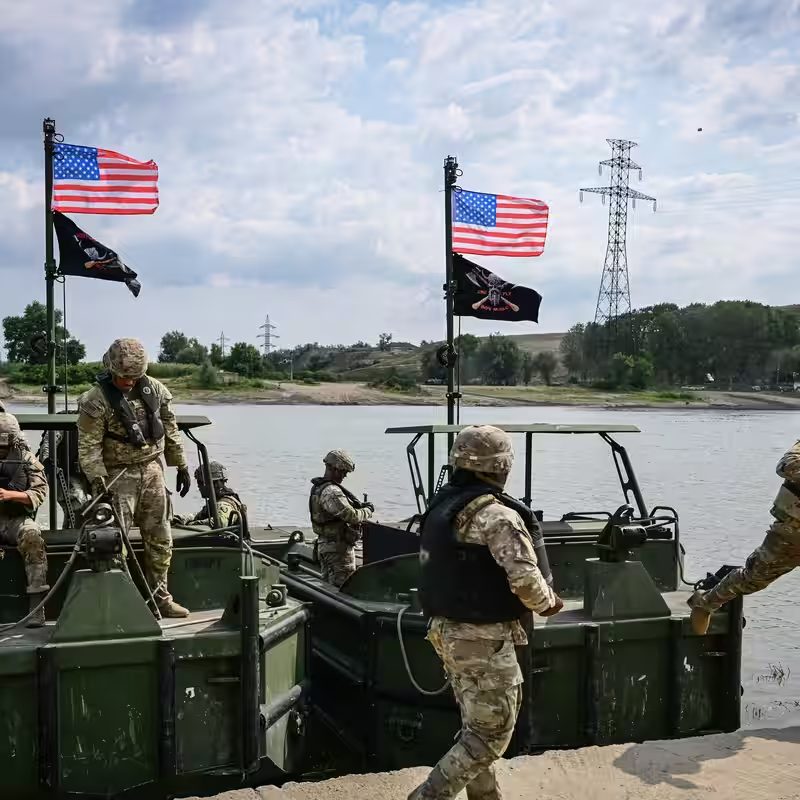U.S. Pulls 700 Troops from Eastern Europe Amid Strategic Shift
In a move that has sparked bipartisan concern and raised eyebrows among NATO allies, the Trump administration announced the withdrawal of approximately 700 U.S. troops from Eastern Europe. The decision, confirmed by both U.S. and Romanian officials on Wednesday, October 29, 2025, marks a significant pivot in American military priorities—away from Europe’s eastern flank and toward the Indo-Pacific, Latin America, and domestic security.
What’s Changing on the Ground?
The troops being withdrawn belong to the 101st Airborne Division’s 2nd Infantry Brigade Combat Team, which had been stationed across Germany, Poland, and Romania. Notably, this unit will not be replaced after its scheduled rotation ends, according to a statement from U.S. Army Europe.
Despite reassurances that this is “not an American withdrawal from Europe or a signal of lessened commitment to NATO,” the optics have alarmed key Republican lawmakers and European partners alike—especially given recent Russian drone incursions into Romanian airspace.
Why Now? The Indo-Pacific Pivot
Defense Secretary Pete Hegseth is spearheading the strategic realignment, aiming to redirect military resources toward what the administration views as more pressing theaters: Asia, Latin America, and homeland defense. This follows President Trump’s long-standing push for NATO members to shoulder more of their own defense burden.
“European allies have been told repeatedly that the U.S. intends to shift focus,” said Romania’s Defense Minister Ionut Mosteanu during a briefing in Bucharest. Romania will retain about 1,000 U.S. troops, including those supporting the Aegis Ashore missile defense site at Mihail Kogălniceanu Air Base—the very base from which the departing brigade is being withdrawn.
Bipartisan Backlash from Capitol Hill
In a rare show of unity, top Republican defense leaders slammed the move. Senator Roger Wicker (R-Miss.) and Representative Mike Rogers (R-Ala.), chairs of the Senate and House Armed Services Committees respectively, issued a joint statement warning that the pullback “sends the wrong signal to Russia” at a critical moment in Ukraine negotiations.
“Pulling back U.S. forces from NATO’s Eastern flank prematurely… undermines deterrence and risks inviting further Russian aggression.”
Former Senate Majority Leader Mitch McConnell echoed the concern: “If you have to say it’s not ‘a signal of lessened commitment,’ then it probably is.”
Where U.S. Troops Still Stand in Europe
Despite the drawdown, the U.S. maintains a robust presence across the continent:
| Country | Estimated U.S. Troop Presence (2025) | Status After Withdrawal |
|---|---|---|
| Romania | ~1,000 | Reduced by ~700; base operations continue |
| Poland | ~14,000 | No change announced; possible increase |
| Germany | Part of rotational force | Temporary deployment ends |
| Europe (Total) | ~84,000 | Still higher than pre-2022 levels |
Poland’s Defense Minister Władysław Kosiniak-Kamysz emphasized that Warsaw has received “repeated assurances” of continued—or even expanded—U.S. military cooperation, especially after President Trump hosted Poland’s newly elected right-wing leader Karol Nawrocki at the White House last month.
Geopolitical Implications
The timing is delicate. Just weeks ago, Russian drones violated Romanian airspace—a stark reminder of Moscow’s reach near NATO’s southeastern border. With U.S. forces pulling back from a base directly across the Black Sea from Russian-occupied Crimea, critics argue the move weakens deterrence at a pivotal moment.
Moreover, the decision was made without consulting Congress, raising questions about inter-branch coordination on national security matters.
What Comes Next?
While the Pentagon insists the security environment in Europe “will not change,” NATO officials acknowledge that European allies are accelerating plans for greater self-reliance in defense—partly in response to Washington’s shifting posture.
For now, the U.S. remains the backbone of NATO’s eastern deterrence—but with fewer boots on the ground in key locations like Romania, the message to both allies and adversaries is being closely scrutinized.




